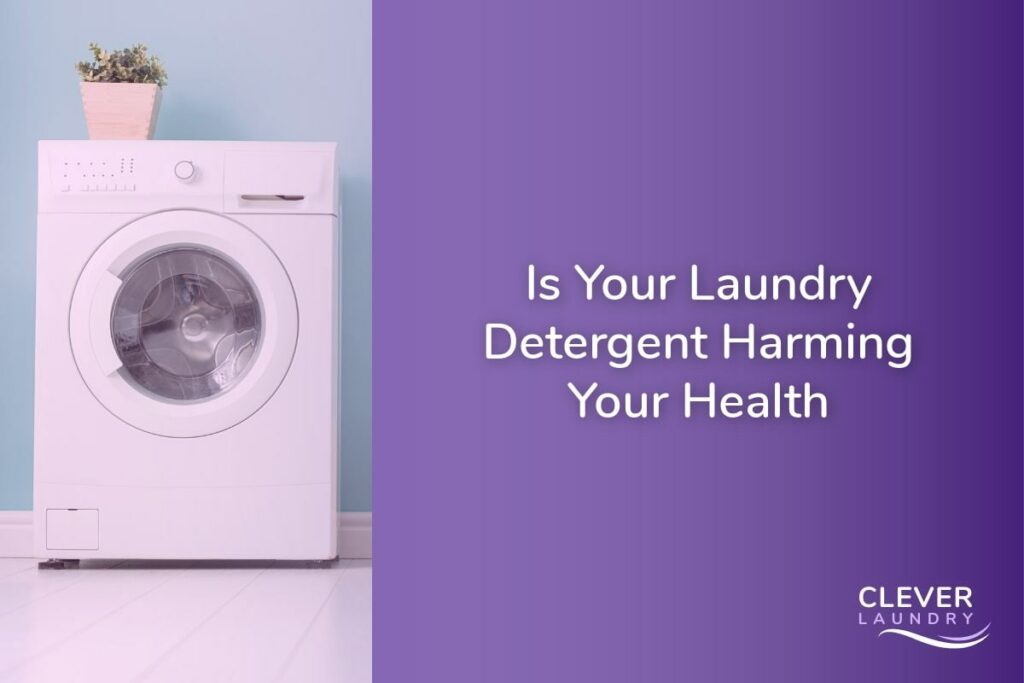When it comes to doing laundry, most people focus on the effectiveness of their detergent in removing stains and odors. But have you ever considered the potential health risks associated with the ingredients in your favorite laundry detergent? In this informative blog post, we will delve into the hidden dangers of laundry detergents and provide tips on how to choose safer alternatives for you and your family.
The Composition of Laundry Detergents
Laundry detergents are complex mixtures of various ingredients designed to clean and freshen your clothes. Each ingredient plays a specific role in the cleaning process, but some may also pose potential health risks.
Common Ingredients in Laundry Detergents
The most common ingredients found in laundry detergents include:
- Surfactants: Remove dirt and stains from fabrics.
- Enzymes: Break down protein, starch, and fat-based stains.
- Bleaching agents: Whiten and brighten clothes.
- Fragrances: Add a pleasant scent to freshly laundered clothes.
- Preservatives: Prevent the growth of bacteria and mold in detergents.
Potential Health Risks of Laundry Detergent Ingredients
Some ingredients in laundry detergents can cause health issues, ranging from skin irritation to more serious concerns such as hormone disruption.
Skin Irritation and Allergies
Many people experience skin irritation or allergies due to certain ingredients in laundry detergents. The American Academy of Dermatology states that fragrances and dyes are common culprits of allergic contact dermatitis, a skin condition characterized by redness, itching, and inflammation.
Respiratory Issues
Ingredients such as synthetic fragrances and preservatives can cause respiratory issues, especially for individuals with asthma or other respiratory conditions. A study published in the journal Air Quality, Atmosphere & Health found that exposure to volatile organic compounds (VOCs) emitted by fragrances in laundry products could trigger asthma symptoms and exacerbate existing respiratory conditions.
Hormone Disruption and Endocrine System Effects
Some laundry detergent ingredients, like phthalates and alkylphenol ethoxylates (APEs), have been linked to hormone disruption and endocrine system effects. The National Institute of Environmental Health Sciences warns that exposure to endocrine-disrupting chemicals may lead to developmental, reproductive, neurological, and immune system issues.
Environmental Concerns
Certain laundry detergent ingredients, such as phosphates, can harm aquatic ecosystems when they enter waterways. The U.S. Environmental Protection Agency (EPA) states that high levels of phosphorus can lead to algal blooms, which deplete oxygen levels in the water and harm aquatic life.
Identifying Harmful Ingredients in Laundry Detergents
To protect your health and the environment, it’s essential to be aware of the potentially harmful ingredients in your laundry detergent.
Phosphates
Phosphates help remove dirt and stains but can cause water pollution. Many countries, including the U.S., have introduced regulations to limit the use of phosphates in detergents, but they may still be present in some products.
Synthetic Fragrances
Synthetic fragrances can cause allergic reactions and respiratory issues. They may also contain phthalates, which are known endocrine disruptors. Opt for fragrance-free detergents or those with natural, plant-based scents.
Optical Brighteners
Optical brighteners are chemicals that absorb UV light and make clothes appear brighter. However, they can cause skin irritation and may be harmful to aquatic life. Look for laundry detergents without optical brighteners or those that use safer alternatives.
Sodium Lauryl Sulfate (SLS) and Sodium Laureth Sulfate (SLES)
SLS and SLES are common surfactants found in laundry detergents, but they can cause skin and eye irritation. Some studies also suggest that SLES may be contaminated with 1,4-dioxane, a possible human carcinogen. Choose detergents with milder surfactants, such as sodium coco sulfate or decyl glucoside.
Tips for Choosing a Safe and Effective Laundry Detergent
Armed with the knowledge of potentially harmful ingredients, you can now make informed decisions when choosing a laundry detergent.
Reading Labels and Understanding Ingredient Lists
Always read the labels on laundry detergent products and research the ingredients. Many companies provide detailed information on their websites about the safety and environmental impact of their products.
Opting for Fragrance-Free and Dye-Free Options
Choose laundry detergents that are fragrance-free and dye-free to minimize the risk of skin irritation and allergies. These products are often labeled as “hypoallergenic” or “for sensitive skin.”
Considering Eco-Friendly and Plant-Based Alternatives
Eco-friendly and plant-based laundry detergents often use safer ingredients and are less likely to cause health issues or harm the environment. Look for products with certifications from reputable organizations, such as the EPA Safer Choice or Green Seal.
Evaluating the Effectiveness of Natural and Homemade Detergents
While natural and homemade laundry detergents can be safer options, it’s essential to ensure that they effectively clean your clothes. Research product reviews or test homemade detergent recipes to find the best option for your needs.
How to Reduce Your Exposure to Harmful Laundry Detergent Ingredients
In addition to choosing safer laundry detergents, there are steps you can take to reduce your exposure to potentially harmful ingredients.
Properly Measuring and Using Detergents
Always follow the manufacturer’s recommendations for measuring and using laundry detergents. Using too much detergent can increase your exposure to harmful ingredients and may also damage your clothes and washing machine.
Rinsing Clothes Thoroughly
Ensure that your clothes are thoroughly rinsed to remove detergent residue. Check your washing machine settings and use the appropriate rinse cycle for your load.
Using an Extra Rinse Cycle
If you have sensitive skin or are concerned about detergent residue, consider using an extra rinse cycle to ensure that all detergent is removed from your clothes.
Ventilating Your Laundry Area
Proper ventilation can help reduce your exposure to VOCs and other harmful chemicals released during the laundering process. Keep your laundry area well-ventilated by opening windows or using exhaust fans.
Conclusion
Understanding the potential health risks associated with laundry detergent ingredients is crucial for protecting your health and the environment. By making informed choices and adopting safer laundry practices, you can minimize your exposure to harmful ingredients and enjoy cleaner, healthier clothes. So, take control of your laundry routine and discover the difference that safer detergent choices can make in your life.

